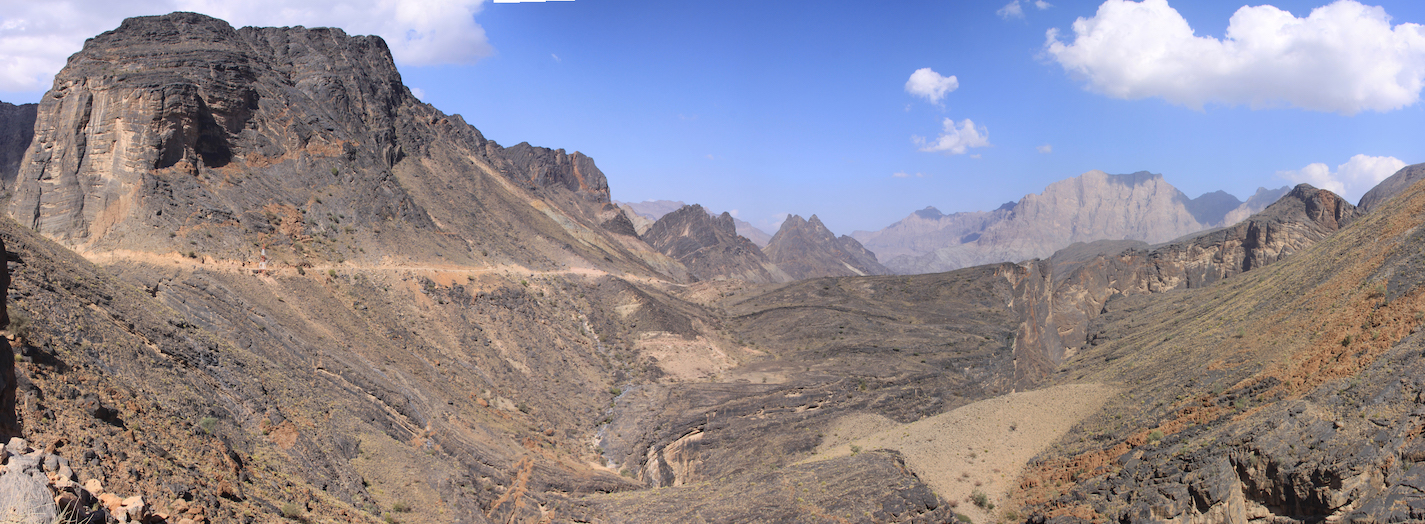
Carbonates of Oman – Analogs for Middle Eastern Oil and Gas Fields
Course Details
The Middle East is one of the richest regions in terms of oil reserves, with five countries (Saudi Arabia, Iran, Iraq, the United Arab Emirates, and Kuwait) listed amongst the ten largest proven oil reserves in the world. In addition, Iran and Qatar figure respectively in positions 2 and 3 for countries with the largest proven natural gas reserves. Much of these hydrocarbon reserves reside in carbonate reservoirs that developed on vast epeiric platforms.
A pervasive school of thought in the industry is that epeiric platforms can be viewed and modeled as simple, layer-cake objects – but is this actually the case? In this course, we will use world-class outcrops from Oman to demonstrate that the reality is more complex than suggested by this simplistic model, and we will explore the impact on the flow of carbonate heterogeneities.
Oman is a stable, safe, and tolerant society, and the country contains some of the most spectacular outcrop analogs to subsurface reservoirs in the regions. This includes Precambrian source-rocks and carbonate reservoirs, the famous Permo-Triassic ‘Khuff’ formation notorious for hosting large natural gas reserves in Qatar and Iran, the Jurassic ‘Arab’ formations that form the largest reservoir in the world (Ghawar in Saudi Arabia) as well as Cretaceous sequences notorious for large microbial reservoirs in the Shuai’ba formation and rudist-related reservoirs in the UAE. The outcrop geology of Oman also sheds light on the structural evolution of the region and its impacts on hydrocarbon reserves, as the role of fault-related diagenesis and halokinesis in controlling fluid flow.
The course is led by Dr. Cédric John, a carbonate expert who has worked for over 10 years with his team on Omani outcrops. The outcrop geology will be used as an integrator between different aspects of carbonate reservoirs (sedimentology, sequence stratigraphy, diagenesis, structuration) and scales (from pore to epeiric platform). It is thus relevant both in terms of fundamental understanding of carbonate reservoirs globally and in terms of gaining a better understanding of the regional geology of the Middle East.
Who Should Attend
• Geologists • Geophysicists
• Petrophysicists
• Engineers
This course is meant for all who are working on carbonate reservoirs in an exploration or development capacity. This course is particularly useful for those working with reservoir geology and reservoir models, as the course will explore carbonate heterogeneities at a range of scales (pore to regional).
Need more information?
Course Outline
Day 1
You will be arriving the day before the field trip starts at Muscat International airport, Sultanate of Oman. The next morning we will begin with a safety briefing and orientation to the field area.
We will then drive to the Walyat of Rustaq, where our first stop will be on famous outcrops of the Oman ophiolites. This will be our opportunity to introduce the tectono-stratigraphic context of Oman and the Middle East, whilst enjoying a cup of tea and looking at mantle gabbros, peridotites, and magnesite veins.
From there we will head towards the foothill of the Oman mountains, where we will be able to explore the sedimentology and the environment of deposition of Neoproterozoic limestones. The Neoproterozoic in Oman is an unconventional oil and gas reservoir, as rafts of dolomitized carbonates are encased within Precambrian evaporite and charged with hydrocarbons. We will also talk about the Pan-African orogeny and its impact on the orientation and distribution of faults and fractures in the Middle East.
We will spend the night in the town of Rustaq, where we will share a hot dinner.
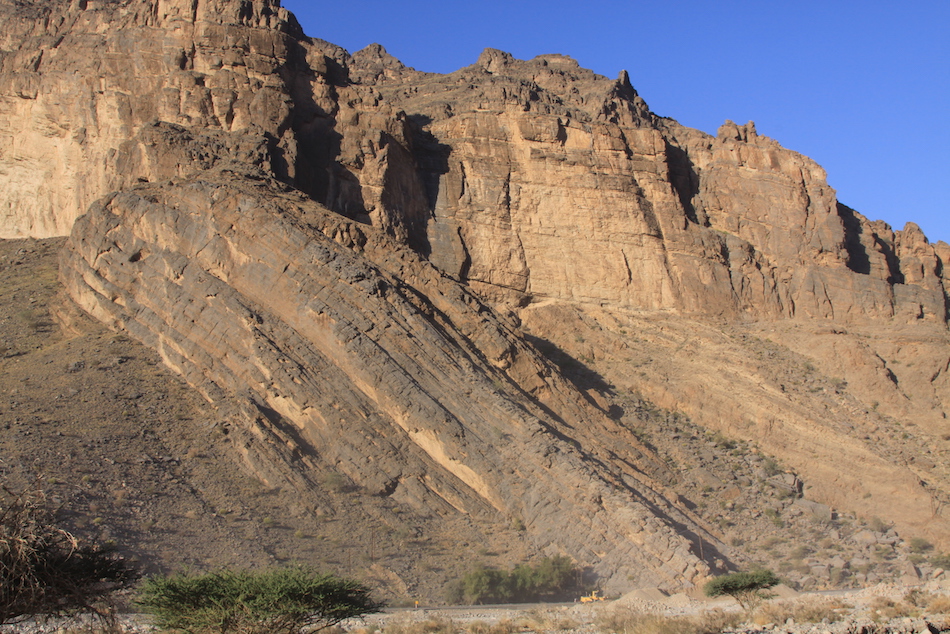
Day 2
We will spend our second day in the Oman Mountains, where we will first focus on the sedimentology and sequence stratigraphy of the dolomitized Permo-Triassic deposits. We will discuss the events of the end Pan-African cycle and how they led to the deposition of first fluvial and then shallow-water carbonates regionally. You will have a chance to look at the nature of the carbonate sediments, as well as the depositional cycles and the nature of the facies in these cycles. We will relate this to the sequence stratigraphic patterns at the epeiric platform scale throughout the Permo-Triassic.
Day 2 will also be your first chance to discuss fracture-related diagenesis, notably the presence of impressive hydrothermal dolomites at the base of the Khuff Formation in Oman, and the impressive fracture-related hydrothermal dolomite bodies in the center of the Jebel Akhdar anticline, where we will see red dolomite bodies against jet black Neoproterozoic limestones.
We will end the day at the summit of the Oman Mountains, where we will have spectacular views of the surrounding mountains. We will stay overnight at the Shorfet al Alameen, where we will also have dinner.
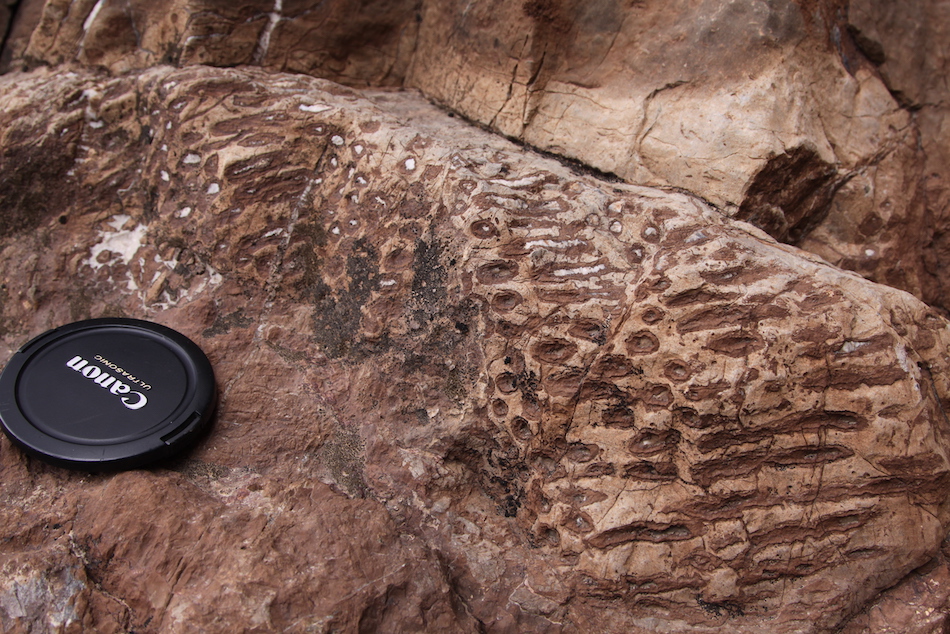
Day 3
After breakfast, we will drive down from the summit of the Oman Mountains towards the Adam Foothills, and we will go to the famous Wadi Muyadin, where a complete sequence of Triassic to Lower Cretaceous rocks is visible.
We will spend the day in Wadi Muyadin, starting from the top of the Triassic deposition, and working our way up the stratigraphy to study the Jurassic deposits of Oman, and the important reservoir rocks of the Lower Cretaceous, including the Ryada, Salil, Habshan, and finishing with the world-famous Shuai’ba reservoir rock.
We will then head to the city of Nizwa, the cultural capital of Oman, where we will stay at a hotel and have dinner.
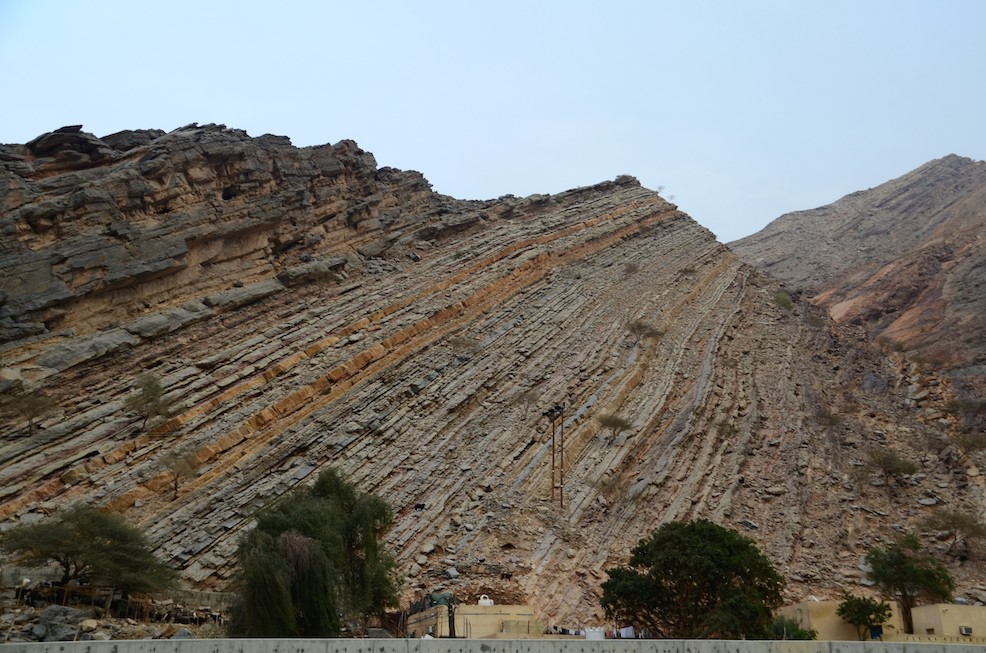
Day 4
The most productive reservoir in Oman is the Lower Cretaceous Natih Formation. Not only is the Natih an intra-shelf shallow-water oil reservoir, but it also contains intra-shelf basinal source rocks. We will start the day from Niswa, and drive to the spectacular foothill of the Oman Mountains and Jebel Madmar.
There, we will be able to look at the detailed stratigraphy and sedimentology of the Natih Fm. We will hike short distances to look at the cyclicity in the Natih, focusing notably on the trends in water depth and what they indicate in terms of sequence stratigraphic response of the Natih shallow-water carbonates.
We will also see organic-rich shales, and talk about shallow-water dolomitization and the relationship between dolomitization and sequence stratigraphic surfaces in the Lower Cretaceous of Oman.
At the end of the day, we will drive to the town of Sinaw, where we will stay at a local hotel.
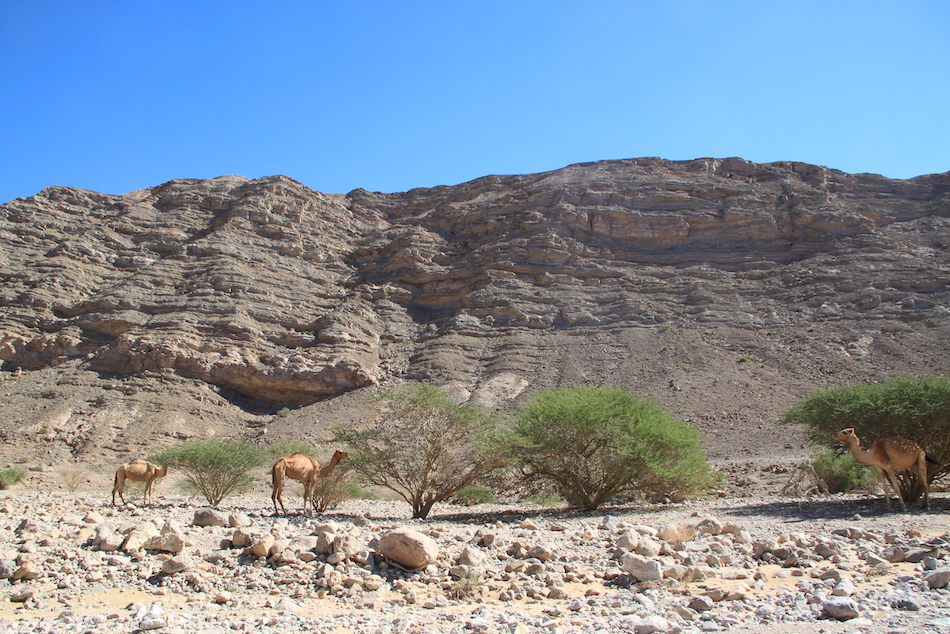
Day 5
On our final field day, we will be looking at the stratigraphy and fracture-related diagenesis on the carbonate carapace of a salt dome. Jebel Madar is a fantastic location for this.
We will leave our hotel and drive to Jebel Madar in the morning. The cars will drop us on the flank of the Jebel, and we will hike our way through the center of the Jebel. Along our way on this gentle hike, we will stop to explore the stratigraphy of the Nahr Umr Fm, a very important formation for the Middle East as it forms the seal of the Shuai’ba formation. The outcrop also offers a beautiful view of the top Shuai’ba, and we will discuss how sequence stratigraphy and diagenesis impact the reservoir properties of this important formation.
We will also look at the fracture corridors on our salt dome, and the mineralization within the fractures, including spectacular barite-calcite associations. We will discuss the intimate link between fractures, halokinesis, fluid flow, mineralization, and reservoir properties.
After re-joining the cars at our base camp, we will have a nice lunch under a shaded tent, followed by our journey back to Muscat where you will be dropped at your hotel, and where we will have our final dinner together. The following day you will be able to catch your flight back home.
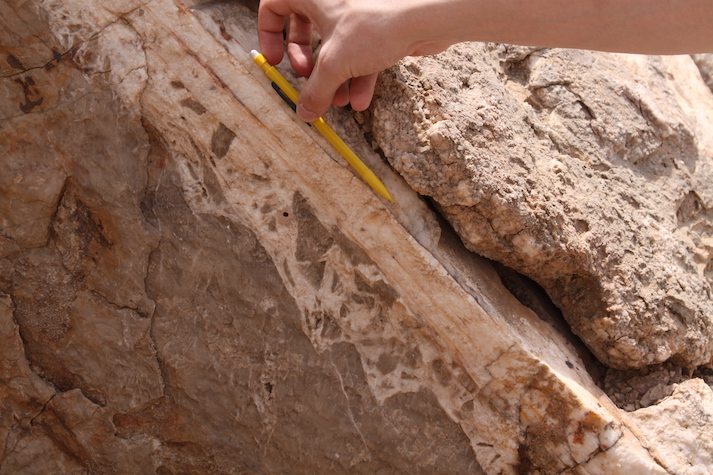
This course is offered in the last week of November every year and costs $7000/person. This all inclusive rate includes five nights hotel stay, all meals, snacks and drinks in the field, fuel, permits, transportation during the field trip, tuition and field guide.


